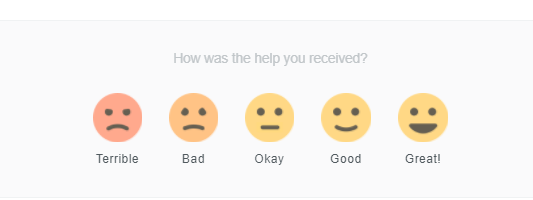Customer Engagement defined – or is it?
Speaking with organisations across different verticals about enabling success, customer engagement regularly comes up in the conversation. Statements like ‘we need to increase engagement of our customers in our brand’, or ‘we want to drive higher customer engagement’ are not uncommon.
The critical question though is – what is customer engagement? Ultimately, one cannot impact something that can’t be defined. When asking organisations to define what they mean by the customer, it is surprising the answers that are offered.
One proposed definition was very simple – “It’s our NPS score, it needs to go up”. Another was “we try to measure how often someone mentions our brand in social media with a positive sentiment”. Even comments like “how often they use the app to get the answer”. Huh?
Let’s break it down.
What is a customer? Merriam-Webster defines this as one that purchases a commodity or service. But is that really what a customer is? In organizations, there are ‘internal’ customers. Should they be part of the definition?
Customer definition proposal. A customer is an individual or entity who exchanges something of value for an experience, product or commodity of equal value, greater value, or that is required of them to possess. Not far from the original one.
The first difference is the Scope of a customer. Customers are individuals (B2C) and entities (B2B, Government, a project team, finance department, etc.).
Second, exchange. The customer exchanges something for something else. Seems innocuous, but an exchange requires interaction. Interaction results in inexperience. Multiple experiences result in relationships.
Third, value. Value for value. It is a contract or obligation to trade something for another. This is core to a meritorious society. In the words of Ayn rand’s Jon Galt, ‘I am a trader’ [see Atlas Shrugged for more].
Fourth, value trade parameters. A value equal, greater or required.
Key concept: VALUE. Value is subjective. What is important to one customer is less important to another. As an example, take the farmer and baker. The farmer values large machines, acreage to produce, pesticides to ensure a maximum yield. The baker values the flour and inputs for a great loaf of bread. A baker would not trade value for pesticides as they have no value in their business for adding pesticides. Likewise, a farmer would not buy flour as it yields no value to the goal of the entity, growing grain.
The Customer Challenge: understanding the value dynamic of each and every customer. Dell recognised this as an opportunity and built a business model around it. Prior to the Dell model, you could buy a PC. In the 2 or 3 configurations that the company defined as ‘valuable’. One the company thought people would trade greater monetary value than it cost to produce. This was the model in the industry – and then came Dell. Dell said tell me what is valuable to you in a PC, and we will build it that way. This mass customisation allowed Dell to rapidly take market share from incumbents.
Continuing the breakdown…. Engagement
Engagement can be taken in many ways. There are 5 sub-definitions of engagement at Merriam-Webster. One of those is relevant to this discussion. “Emotional Involvement or commitment”. In management discussions and publications, this means having your customers be your best advertisement. Ken Blanchard and Sheldon Bowles book, Raving Fans, the need to create raving fans is key to success and customer satisfaction leadership.
So, Engagement means an emotional commitment to a company. Being a company whose customers positively comment and reference their experience.
The Challenge … how do organisations, teams or individuals gauge and impact their customers’ engagement. This effort is highly subjective as an emotional commitment for one may be different for another.
Today, the use of Net Promoter Score is largely used to attempt to gauge how much of the customer base is raving (a score of 9 or 10 a.k.a Promoter) in relation to those who are negatively (a score of 1 to 6 a.k.a detractor) committed. NPS is a survey and in turn subject to confidence levels. For those who are not statisticians, a confidence level is, in lay terms, how accurate, statistically, the result will hold up to be true for the entire customer base. A typical goal for confidence is 95%, which means that 1 in 20 times your results are wrong. Depending on who prepares the data and how the survey is conducted, this skew can vary, beware of the source of the data and analysis.
The key to solving the Challenge is…. Know what impacts your customers engagement.
NPS is correlated to the amount of effort that customers have to dedicated to maintaining their relationship with an organisation. This effort happens on many levels, financial/economic, time, physical and emotional.
Effort: In short, how much financial effort does your product or service requirements. Even deeper, how much does it cost versus the competition. If your product or service is $50 per month and a similar product from a competitor is $40 per month, this is a risk to your base. Are you providing the experience to compensate for this difference?
Additionally, how much does it cost in relation to the customer’s effort to obtain it? For example, a $50 a month commitment from Customer Y who makes $50,0000 a year is relatively different from the same commitment from Customer X who makes $500,000 a year.
Combine the two, and if the experience is not as seamless for the customer, the VALUE is a perceived difference. If you need to dedicate more time effort say 4 hours per year (20 minutes per month) more to maintain the $40 competitor, then Customer Y would find benefit in leaving. The calculation is Customer Y’s $25 wage rate per hour equates to $8.33 being spent to maintain the competitor $40 per month commitment would be less ($48.33) than staying with your offer ($50). Conversely, Customer X at a $250 per hour wage rate would not see the benefit to switching.
This economic concept of price sensitivity is well discussed and documented. The point, is that effort is important and to ignore the effort from the customer’s view can be devastating to your organisation.
Emotional effort. There can be negative emotional effort and positive emotional effort. Negative Emotional effort occurs when in the customer’s mind, their money and/or time is being wasted. Transfers between departments, slow response time and the horrible … being put on hold only to not get a result. Positive effort can occur when an unexpected assist is received. Think of this where someone is struggling to load a bag into a car. Someone stops and helps without being asked, there is an emotional connection for both the helper and the helped (apologies to English teachers everywhere). This connection happens today when customer-facing employees recognise and act. Case in point, during a recent visit to a national retailer for something needed, the clerk recognised that a $5 credit could be applied and offered to apply it.
The customer is pleased and somewhat surprised that an organisation would reduce the economic impact without being asked and recognise them as a valuable repeat customer. In contrast, the same situation and the customer leaves and reads their receipt 3 days later that states the $5 benefit needed to be used 2 days ago. The customer is now frustrated and negatively emotionally involved.
The one-line answer to this dilemma …. There isn’t one.
There is however a way to begin to affect change. It is to follow QPC’s three simple steps while keeping in mind that simplicity is never simple.
Step 1: connect the dots
Gathering data from every interaction of the customer journey. It means connecting the data and experiences across retail, web, chat, contact centre, email and social media.
Step 2: Engage with your data
Linking together the individual experiences on their journeys and identifying customer effort levels. Correlating effort to the socio-economic customer base data drives the opportunity to create game-changing metrics. Customer effort becomes the key metric for effort reduction.
Step 3: Automate engagement improvement
Using automation to drive proactive effort reductions. If a customer previously talked to an agent about an issue but then is contacting your contact centre again, moving them to the next level of support automatically reduces customer effort.
In summary, the onus on the organisation is to understand the customer’s experience, simplify it and be proactive to reduce the amount of effort the customer needs to expend. In short, customer engagement is increased when the customer feels the organization has their best interests in mind. Never an easy endeavour, but an increasingly crucial one to become or stay leaders in their industries.










